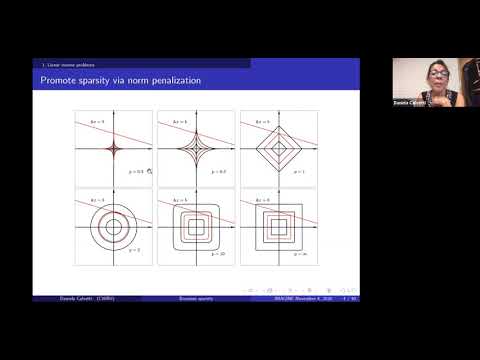Description:
Explore Bayesian approaches to sparse inverse problems in this SIAM-IS Virtual Seminar Series talk. Delve into efficient computational frameworks for Bayesian sparse inverse solvers, focusing on hierarchical prior models that promote sparsity. Learn about inner-outer iteration schemes, dynamic scaling weight updates, and the application of Conjugate Gradient methods for least squares problems. Discover how this approach can be applied to imaging and dictionary learning, with examples demonstrating its performance. Gain insights into sparsity as a belief, sparsity-promoting priors, and the Iterated Alternating Sequential (IAS) algorithm. Examine computed examples, including 1D tests, starry night reconstructions, and applications to MNIST handwritten digit datasets with varying noise levels.

Bayesian Reimaging of Sparsity in Inverse Problems - SIAM-IS Virtual Seminar
Add to list
#Mathematics
#Statistics & Probability
#Bayesian Statistics
#Data Science
#Data Analysis
#Computer Science
#Machine Learning
#Engineering
#Electrical Engineering
#Signal Processing